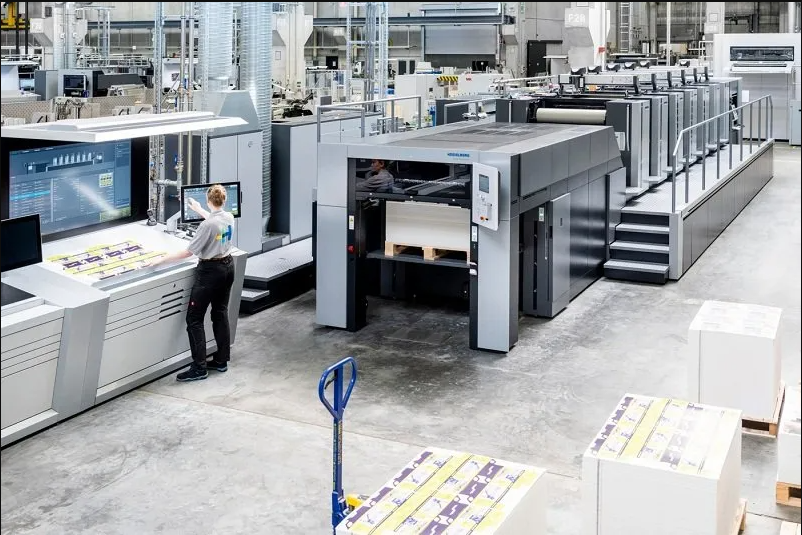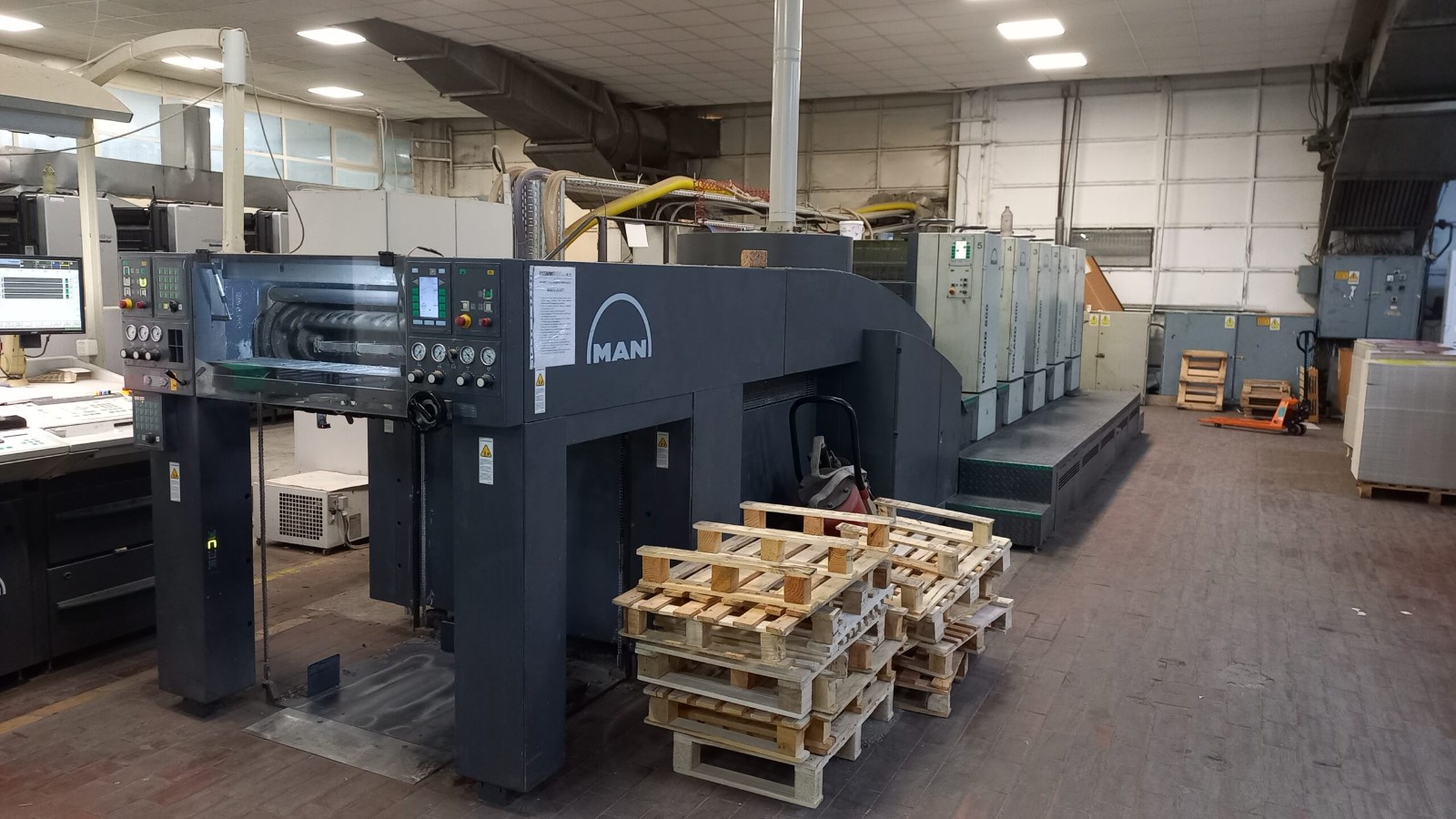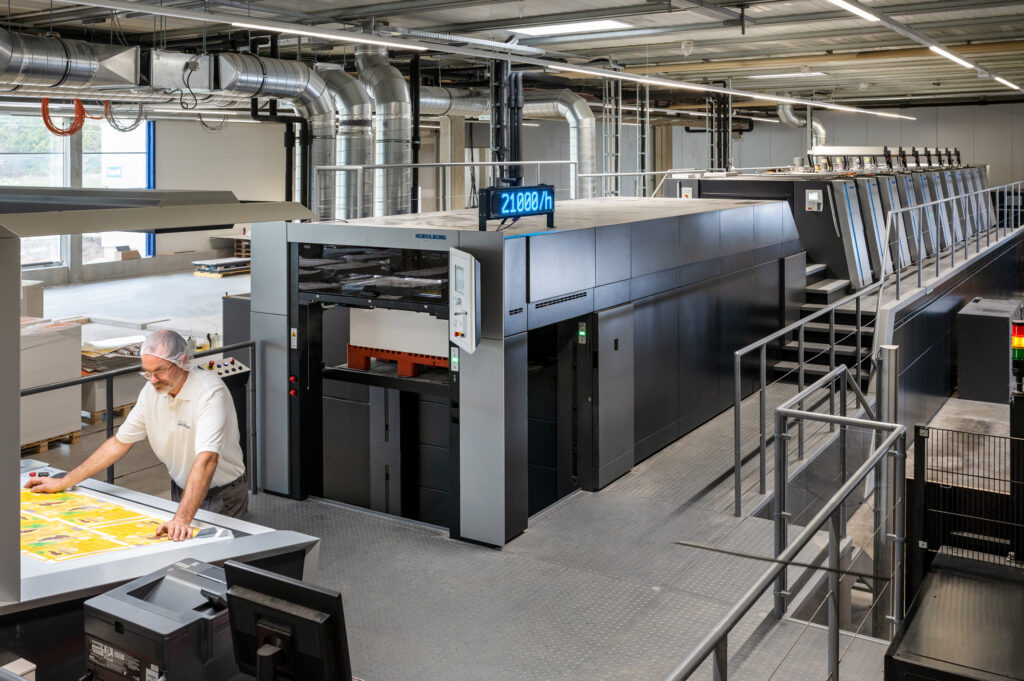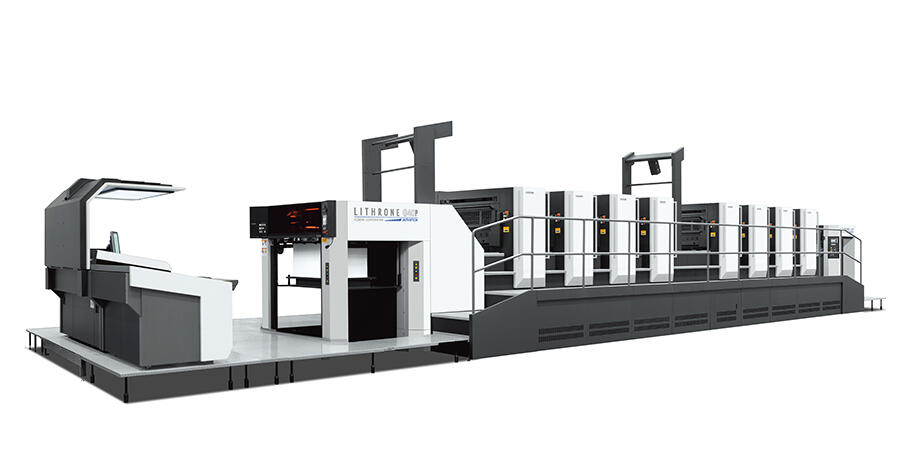
Sheetfed offset printing represents the highest quality of lithography, which uses sheets of paper, cardboard or a continuous roll which can be cut as needed for the process of printing.
The name says it all, the paper is fed into the printing machine.
Sheetfed offset printing presses are the most cost-effective, particularly for large runs.
This technology is also ideal when you need large quantities and/or flexible color, paper or cardboard and sizing options.
With sheetfed offset printing, sheets of paper are fed into the printing press to be printed on.
Some printing presses contain “perfector cylinder” that enables the pressman to flip the sheet of paper or cardboard so both sides can be printed on in one pass.
Sheetfed presses can print from 4,000 to 18,000 sheets per hour depending on the specification of the machine and the complexity of the job.
This high output makes them suitable for a wide array of printed products, including business cards, brochures, packaging and other commercial materials.
Types of Sheetfed Offset Printing Machines
Sheetfed presses come in three main size categories:
1. Small Offset Presses:
These machines print on paper up to B3 format (353 × 500 mm or 13.9 × 19.7 inches) and are often used by small local printers.
They are ideal for producing business cards, stationery, flyers, and short-run business forms.
2. Medium Offset Presses:
Capable of printing on paper or cardboard up to B2 format (500 × 707 mm or 19.7 × 27.8 inches), these presses are typically used by medium to large commercial printers.
They are designed to handle two or more colors and are commonly employed for printing brochures and medium-run color work (5,000 to 20,000 copies).

3. Large Offset Presses:
The largest of the sheetfed presses can print on paper or cardboard up to B1 format (707 × 1000 mm or 27.8 × 39.4 inches) or larger.
They are perfect for long-run color work, with the capability of producing up to 100,000 copies and more.
Advanced Sheetfed Offset Presses: A Look at Some of Industry-Leading Machines
In the world of high-end printing, offset sheetfed presses are the backbone of high-quality production.
These machines are favored for their ability to produce clear, vibrant prints that meet the demanding needs of a variety of industries, from packaging to commercial printing.
Among the many options available, certain advanced printing machines have stood out, not only for their technology but also for the consistent results they provide.
Two such industrial giants are Heidelberg Speedmaster and Komori Lithrone.
Heidelberg Speedmaster: The Benchmark of Efficiency

The Heidelberg Speedmaster is often considered as the gold standard in the world of sheetfed offset printing.
Known for its reliability and versatility, the Speedmaster series is a mainstay in print operations globally.
What sets this printing machine apart is its advanced automation and integration of cutting-edge technology.
One of the standout features of the Heidelberg Speedmaster is the Prinect Press Center.
This intuitive control system allows operators to manage the entire printing process from a single interface.
With tools like Intellistart 3 and Intelliline, Speedmaster optimizes job preparation and reduces set-up time, making it incredibly efficient for high-volume printing.
The press also includes Heidelberg’s Push to Stop technology, which automates the printing process to the point that jobs can be produced one after the other without manual intervention, significantly increasing productivity.
For those looking for sustainability in their printing operations, the Speedmaster also offers eco-friendly features.
Its energy-efficient components and reduced waste generation capabilities that comply with modern environmental standards make it a smart choice for companies that are aware of their environmental footprint.
Komori Lithrone: Precision and Innovation

Another heavyweight player in the sheetfed offset printing industry is Komori Lithrone.
Known for its precision and ability to handle a wide range of substrates, the Lithrone series is particularly popular in markets that require high-quality prints, such as luxury packaging and fine art reproductions.
The Komori Lithrone H-UV/LED drying system is a great technological advantage.
This system allows the ink to dry instantly, allowing for shorter processing times and reducing the risk of smudging or setoff.
The press is also equipped with Komori’s KHS-AI system, which uses artificial intelligence to automate many aspects of press setup and operation.
This results not only in faster production times, but also in less waste, as the machine optimizes the use of ink and reduces material consumption.
Related products:
High quality offset printing ink
High gloss offset printing ink

